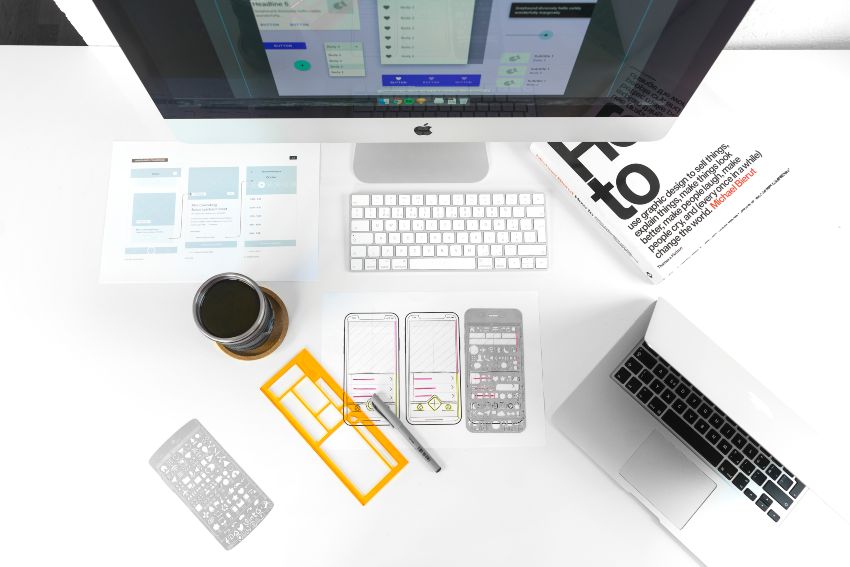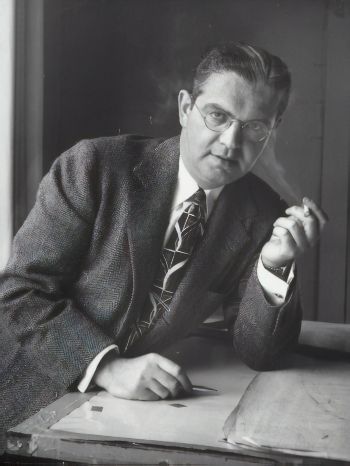By Nathan Young

Have you ever visited an application or website that was extraordinarily easy to use? The text you wanted was upfront and visible, links were easy to find, and the whole experience may have even felt a bit like a game?
Conversely, have you ever visited an app or website that was difficult and clunky? The text was too small, the information didn't flow right, the buttons were hard to find, and every step felt like a chore?
What you might have experienced was the difference between good and bad user experience (UX) design.
UX design is a multi-phase process to create the experience a user will have when they interact with a product or service and can include everything from design, usability, function and branding.
It's becoming an increasingly in-demand skill and for good reason. An easy or enjoyable UX design can make all the difference between whether a product or service succeeds or not.
And while you might only be hearing about UX design now, it has a history that goes back perhaps thousands of years and projects to play an important role in our world going forward too.
A History of UX Design
The term "UX Design" was first coined by cognitive scientist Don Norman in the early 90s. He worked for Apple as the User Experience Architect and went on to establish the Cognitive Science program at UC San Diego. In his own words, "I invented the term because I thought human interface and usability were too narrow: I wanted to cover all aspects of the person's experience with a system, including industrial design, graphics, the interface, the physical interaction and the manual."
Yet, the history of UX design goes back much farther than that.
Some UX design enthusiasts will point to the ancient Chinese concept of Feng Shui as one of the earliest known examples of UX design in history. Feng shui is the practice of arranging objects and space in such a way to be pleasing, harmonious and create a "flow."
In the 19th century, the tenets of UX design began to emerge more fully in the minds of prominent thinkers such as Frederick Winslow Taylor and industrialists like Henry Ford, who were motivated to make factory labor flow more efficiently. They investigated how workers interacted with their tools and how each phase of the production process happened. The fact that their focus was on how humans interacted with machines was a crucial step in the evolution of UX design.
 In 1955, industrial engineer Henry Dreyfuss (pictured) published his book, Designing for People. The book brought the concepts of UX design to the forefront of product developers' minds at a time when the household appliance and consumer manufacturing industries were rapidly expanding in the American market. Dreyfuss himself was involved in developing such products as Hoover vacuum cleaners, tabletop telephones and the Royal Typewriter Company's Quiet DeLuxe model.
In 1955, industrial engineer Henry Dreyfuss (pictured) published his book, Designing for People. The book brought the concepts of UX design to the forefront of product developers' minds at a time when the household appliance and consumer manufacturing industries were rapidly expanding in the American market. Dreyfuss himself was involved in developing such products as Hoover vacuum cleaners, tabletop telephones and the Royal Typewriter Company's Quiet DeLuxe model.
His now-famous quote is one of the most often cited lines in the world of UX design.
"When the point of contact between the product and the people becomes a point of friction, then the [designer] has failed. On the other hand, if people are made safer, more comfortable, more eager to purchase, more efficient—or just plain happier—by contact with the product, then the designer has succeeded."
The next great leap in UX design took place in the 80s and 90s as personal computers and the internet became more widespread.
Companies like Microsoft and Apple designed software and operating systems to translate the cryptic digital language of computers into something more pleasing and accessible for the everyday user. Suddenly you didn't need to understand programming languages to use a computer. Everything was communicated in plain English and could be manipulated with a "mouse" (another innovation of UX design).
This trend only accelerated with the popularization of the internet, which enlisted browsing software like Netscape and Explorer to make "surfing the web" accessible to anyone. Website and UX design quickly evolved to follow suit.
Current Trends in UX Design
Today UX design is a robust and growing industry. While it's most often associated with digital products, UX design is an important consideration for analog products and services as well.
Some popular current trends in UX design include:
Individual Learning
The pandemic accelerated an already emerging trend of giving individuals access to more educational opportunities on their own terms, such as online courses, hybrid learning, and "learning by doing" applications.
This trend is only likely to accelerate as we all find it necessary to continually learn new skills in our ever-changing world.
Direct Feedback
It can be exceptionally easy and informative for UX designers to offer users two different experiences with digital products. They then compare the conversion rate of each experience to see which is more effective. This technique is used to determine everything from the overall design of an application to the wording on a single button.
The real-time feedback helps designers know which aspects of the user experience are succeeding and which are falling flat so that they can adjust accordingly.
Inclusive Design
Recognizing that not all humans are the same, and we each bring our unique needs and perspectives to everything we interact with is another important current trend in UX design.
Some of the basic tenets of this trend include:
- Recognizing which perspectives are included in UX design and expanding those perspectives to suit additional needs.
- Designing to serve people with different levels of physical and mental abilities.
- Learning from diversity by seeking to incorporate the needs of all people in the design process from the get-go.
The Future of UX Design
UX design will only continue to grow in importance and scope as the industry evolves. Some emerging trends in UX design that are sure to become essential elements in the future include:
Virtual and Augmented Reality
Virtual (VR) and augmented reality (AR) have become incredibly popular for gaming; other applications include everything from social gatherings to assisted surgery on patients.
The expansion of VR and AR creates a host of new challenges and opportunities for UX designers. What will virtual and augmented reality interfaces look like? How will they evolve? What will they be capable of?
It is a potentially vast and exciting realm of technology where UX designers will be front and center.
Artificial intelligence
Artificial intelligence is another realm destined to grow and evolve in the coming years.
Companies are already using AI to recommend products and address potential questions from customers. This will only expand in the future as well.
Navigating how artificial intelligence interacts with actual humans will take the work of UX designers to create an experience that is not only seamless but also effective and even enjoyable.
Voice technology
Right now, we're all very accustomed to interacting with technology via visual screens and typing in our commands via touch, but this might not be the case for long.
Voice technology is another emerging field that will require the work of innovative UX designers to make it an enriching and enjoyable experience for users.
How will voice interactions work? What tone will the speaker share back? How effective will these interactions be? Will we one day be having conversations with digitally created voices?
If we do, UX designers will be creating them.
Do you have questions about UX design? Share them with us in the comments!